The History of Park Hills
The History of Park Hills
From Foundation through Incorporation
In the 1800s, Park Hills was mostly uninhabited, as it was too hilly to farm and too inaccessible to build homes. There were a few houses along Lexington Pike, the current Old State Road—the forerunner of Dixie Highway. The only landmark in the area was the Stonewall House, a restaurant and tavern built in the mid 1800s. It served as a stopover point on the turnpike for farmers taking stock to market in Covington and Cincinnati. During the 1930s, it was remodeled and renamed the Hotel Hahn.
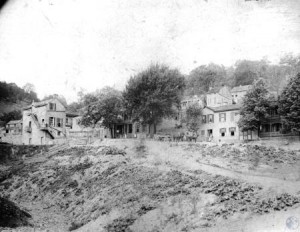
This photo was taken in 1890 and shows the old Dutch settlement that was once located where today’s Amsterdam Road intersects Montague Road. At that time it was called Amsterdam Village and it was an established community with its own brewery, slaughterhouses, tavern, meeting hall, sauerkraut factory, and moonshine still.

The development of Park Hills started in the 1920s, decades after Erlanger, Elsmere, and Crescent Springs were founded. It began in earnest when the Lee, Simmons, and Billiter families bought land and laid out the streets. By 1926, homes were for sale on Audubon, Emerson, Cleveland, Park Drive, and Rose Circle. Developers proclaimed Park Hills “the most beautiful subdivision property in the country, with every city convenience, and no city taxes.” Lots sold for $1,800 and up, and homes sold for close to $10,000.
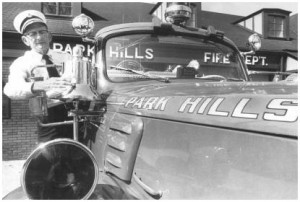
A city incorporation charter was granted in June, 1927. The first Mayor was Stanley Disque. Joseph Hermes, William Ruef, William Middendorf, and Dr. R.M. Rankin were the Trustees; R.C. Johnson, the Assessor; Thomas Dunn was Marshall; Martin J. Brown was Police Judge. Park Hills had a contract with the City of Covington for fire protection until 1942, when a Volunteer Fire Department was formed.
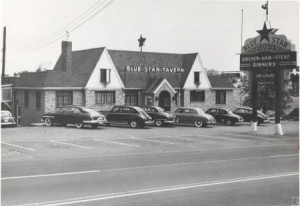
In the 1930s, a commercial boom along the Park Hills section of Dixie Highway started what was later called “The Gourmet Strip.” Marshall’s Tavern, Nick Behle’s Old Lamp Lighter, Gus Sanzere’s Golden Goose, The White Horse, Chappie’s Tavern, and Blue Star Tavern were all popular establishments. Today, Szechuan Garden Bistro is located where the Golden Goose once stood.
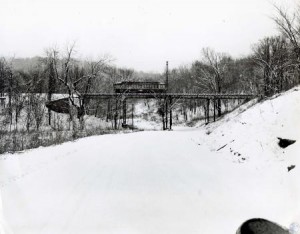
The extensive trolley line connecting Park Hills with downtown Covington, Cincinnati, and other Kenton County areas was a great advantage of living in Park Hills. Throughout the early years of Park Hills development, trolleys were a convenient means of transportation around the city, as residents used them to commute to town and visitors used them to come to Devou Park. The trolleys ran until the early 1950s, when the last cars were retired.
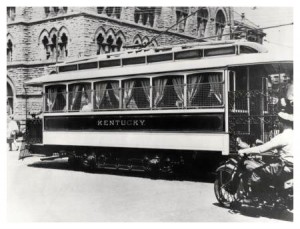
The Kentucky Car, built in the 1890s, finished its last trip in 1950. It was a party car that was rented for weddings, parties, and other special occasions. Its interior was well furnished and finely appointed, as it transported guests for many grand events during the first decades of Park Hill’s history. It now can be seen at the Behringer-Crawford Museum in Devou Park.
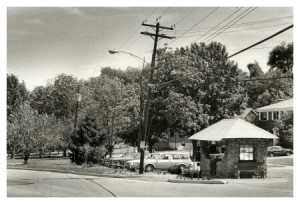
Trolley Park was named in honor of the trolley line that ran through it. The stone buildings at each end of the park were once shelters for commuters who waited for the trolley. Trolley Park is now the focal point for various events held in Park Hills, such as the Memorial Day parade and Easter egg hunt.
Special thanks to the Park Hills Civic Association for the content of this page.



